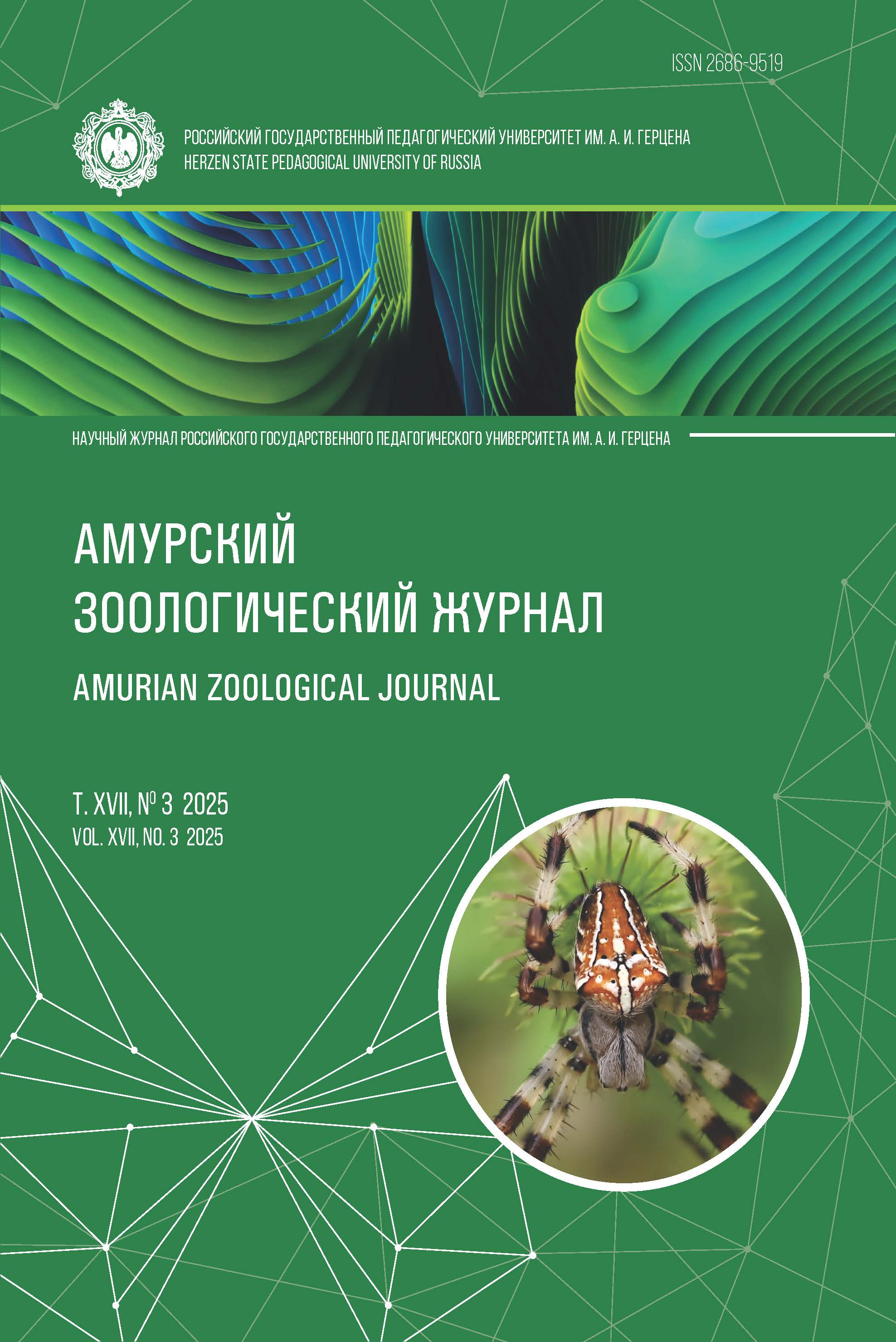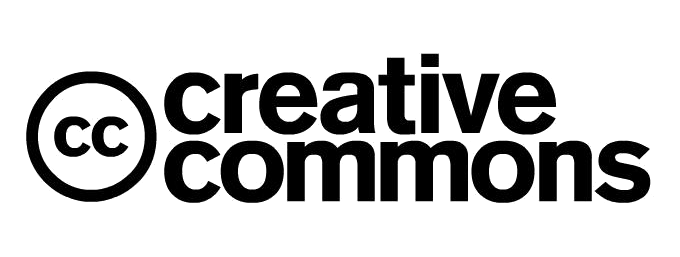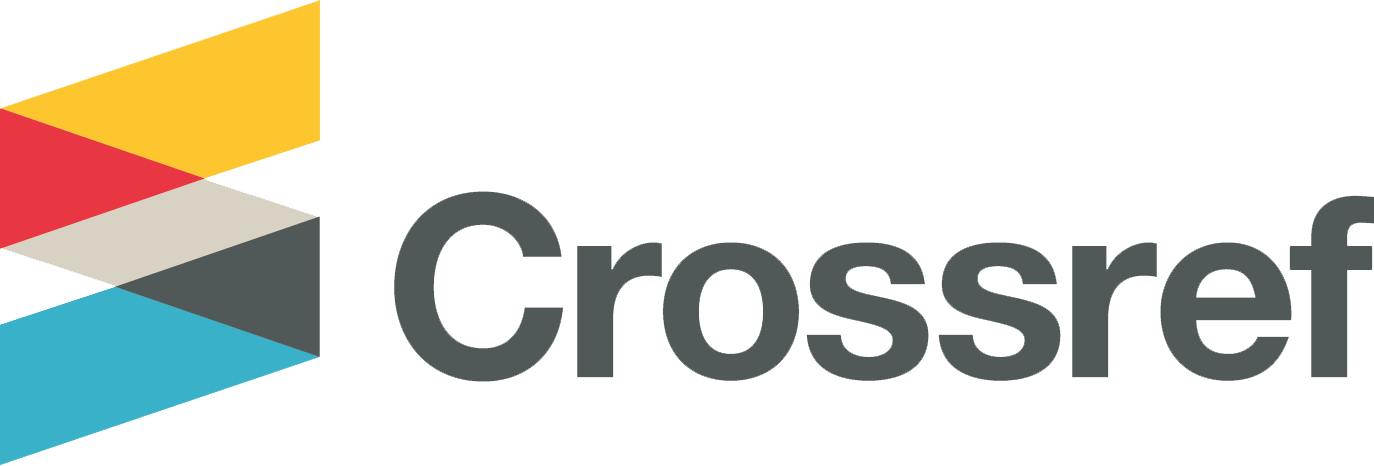Herpetological observations on the island of Cayo Cruz
DOI:
https://doi.org/10.33910/2686-9519-2025-17-3-476-480Keywords:
Cuba, Sabana-Camagüey Archipelago, Cayo Cruz, herpetofauna, ReptiliaAbstract
The herpetofauna of Cayo Cruz island in the Sabana-Camagüey archipelago, located off the northern coast of Cuba, includes seven species of terrestrial reptiles (Ameiva auberi orlandoi, Anolis jubar santamariae, Anolis porcatus porcatus, Cyclura nubila nubila, Leiocephalus stictigaster septentrionalis, Hemidactylus mabouia, Cubophis cantherigerus cantherigerus) and three species of sea turtles (Chelonia mydas, Caretta caretta, Eretmochelys imbricata). Amphibians are absent from the island. The study confirms the presence of the ameiva Pholidoscelis auberi on the island, clarifies the subspecies of Anolis jubar, and documents the first record of Hemidactylus mabouia for the island. A previous record of a third anole species, Anolis sagrei, is determined to have been based on a misidentification of female Anolis jubar.
References
Bondarenko, D. A. (1994) Rasprostranenie i plotnost’ naseleniya sredneaziatskoj cherepakhi v Tsentral’nykh Kyzylkumakh (Uzbekistan) [Distribution and population density of Horsfield’s tortoise in central Kizil-kum (Usbekistan)]. Byulleten’ Moskovskogo obshchestva ispytatelej prirody. Otdel biologicheskij — Bulletin of Moscow Society of Naturalists. Biological Series, vol. 99, no. 1, pp. 22–27. (In Russian)
Bondarenko, D. A., Ergashev, U. H. (2022) Presmykayushchiesya pustynnykh ravnin Yugo-Zapadnogo Tadzhikistana: prostranstvennoe raspredelenie, plotnost’ naseleniya i struktura soobshchestv [Reptiles of the Southwestern Tajikistan desert plains: Spatial distribution, population density and communities structure]. Sovremennaya gerpetologiya — Current Studies in Herpetology, vol. 22, no. 1-2, pp. 17–39. https://doi.org/10.18500/1814-6090-2022-22-1-2-17-39 (In Russian)
Borroto-Páez, R., Bosch, R. A., Fabres, B. A., Garsía, O. A. (2015) Introduced amphibians and reptiles in the Cuban archipelago. Herpetological Conservation and Biology, vol. 10, no. 3, pp. 985–1012. (In English)
Claro, R., Reshetnikov, Yu. S., Alcolado, P. M. (2001) Physical attributes of Coastal Cuba. In: R. Claro, K. C. Lindeman, L. R. Parenti (eds.). Ecology of the marine fishes of Cuba. Washington: Smithsonian Institution Press, pp. 1–20. (In English)
Estrada, A. R. (2012) The Cuban Archipelago. Bulletin of the Florida Museum of Natural History, vol. 51, no. 2, pp. 113–125. https://doi.org/10.58782/flmnh.bjvk7571 (In English)
Galford, G. L., Fernandez, M., Roman, J. et al. (2018) Cuban land use and conservation, from rainforests to coral reefs. Bulletin of Marine Science, vol. 94, no. 2, pp. 171–191. https://doi.org/10.5343/bms.2017.1026 (In English)
Gavián, F. M., Andreu, G. N., Ricardo, J. A. et al. (2011) Principales áreas de anidación de las tortugas marinas en el archipiélago cubano [Principal areas of marine turtle nesting activity in the Cuban Archiapelago]. Cub@: Medio Ambiente y Desarrollo; Revista electrónica de la Agencia de Medio Ambiente, vol. 11, no. 20, pp. 1–7. (In Spanish)
Schwartz, A. (1968) The Cuban lizards of the Anolis homolechis complex. Tulane Studies in Zoology, vol. 14, no. 4, pp. 140–184. https://doi.org/10.5962/BHL.PART.29853 (In English)
Downloads
Published
Issue
Section
License
Copyright (c) 2025 Konstantin D. Milto

This work is licensed under a Creative Commons Attribution-NonCommercial 4.0 International License.
The work is provided under the terms of the Public Offer and of Creative Commons public license Attribution-NonCommercial 4.0 International (CC BY-NC 4.0). This license allows an unlimited number of persons to reproduce and share the Licensed Material in all media and formats. Any use of the Licensed Material shall contain an identification of its Creator(s) and must be for non-commercial purposes only.







